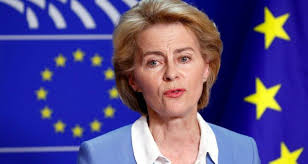
Simone Tagliapietra
BRUSSELS, MAY 30: – Since the European Green Deal was introduced in 2019, European Commission President Ursula von der Leyen has touted it as the European Union’s new economic-growth agenda. After all, while the strategy’s core objective is climate-related – to reduce the EU’s greenhouse-gas emissions to net-zero by 2050 – it aims to achieve that by modernizing the economy and fostering innovation. But not everyone is convinced.
In recent months, European drivers have complained about the EU’s looming ban on the production and sale of cars with internal combustion engines, households have resisted plans to phase out gas boilers, and farmers have revolted against environmental regulations they view as overbearing. With the approach of next month’s European Parliament elections, far-right parties are jostling to establish themselves as the official standard-bearers of this growing discontent and preparing to use any power they win to sabotage the green agenda.
The protesters make some legitimate points. The radical transformation that the European Green Deal entails raises difficult questions about who should bear the costs of climate action, both within and among countries. If those costs end up falling disproportionately on ordinary workers – let alone the poorest and most vulnerable communities – the transformation will exacerbate inequality, with potentially serious social and political knock-on effects. Fortunately, properly designed climate policies can avert that outcome and actually lead to greater social equality.
The European Green Deal has accounted for climate-justice considerations since the beginning. Advocates always knew that they would need to secure the political support of coal-intensive Poland, and they had not forgotten the “yellow vest” revolt that erupted in France in 2018, after President Emmanuel Macron attempted to introduce a carbon tax in road transport.
It is no coincidence that the first flagship initiative under the European Green Deal was the Just Transition Fund, which will dedicate €20 billion ($21.6 billion) in 2021-27 to support the “economic diversification and reconversion” of the territories expected to be the most negatively affected by the green transition. Nor is it a coincidence that, while creating the first-ever carbon market for buildings and road transport, the European Commission established the Social Climate Fund, which is expected to mobilize at least €86.7 billion between 2026 and 2032 to compensate the most vulnerable groups for higher energy prices.
These policy initiatives reflect the advice one would find in the economic literature on carbon dividends. But they will prove insufficient to offset the profound distributional effects of climate policy, particularly as decarbonization accelerates and includes sectors that directly affect ordinary people’s daily lives, such as buildings and transport. That is why Europe also needs a new green social contract, which focuses primarily on these sectors.
To this end, the EU should streamline and simplify existing funding instruments to deliver even more decisive support for the transformation of coal and carbon-intensive regions. It should also take steps to ensure that EU countries make better, more targeted use of carbon-market revenues to support the uptake of green alternatives, from electric vehicles to home heating systems. And it should push for a “Rural Green Deal” that supports small farmers while requiring the agri-food industry to transform its systems. While such EU-level action would not eliminate the distributional consequences of climate policy, it would help significantly.
The EU must also turn decarbonization into a real economic opportunity by developing a solid green industrial policy. This will require, first and foremost, revitalizing the “boring” EU single-market agenda, in order to leverage the bloc’s greatest asset – a huge shared market for goods, financial services, energy, workers, and ideas – to incentivize new investments in clean tech.
Interventions in specific technology areas will also be needed. Rather than mimic the broad-based US Inflation Reduction Act, the EU should make the most of its limited resources by delivering targeted support in areas where it already has a solid comparative advantage on which to build. While some incumbent industries might need support as they decarbonize, supporting breakthrough innovations should be the primary goal.
The European Green Deal has come a long way since it was conceived five years ago. But if the EU is to achieve its 2030 climate goals and achieve net-zero emissions by 2050, it must act now to ensure that it can weather the inevitable political headwinds. A new green social contract and industrial policy can make all the difference.
Simone Tagliapietra, a senior fellow at the Brussels-based think tank Bruegel, is an adjunct professor at the Johns Hopkins University School of Advanced International Studies, Bologna.
Copyright: Project Syndicate, 2024.
www.project-syndicate.org
















